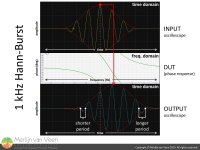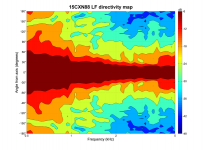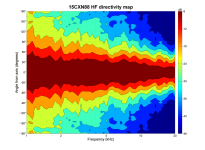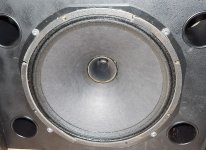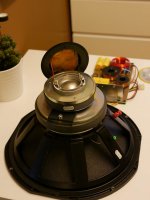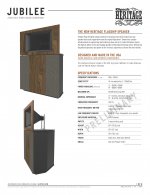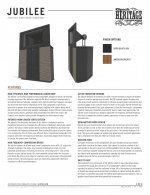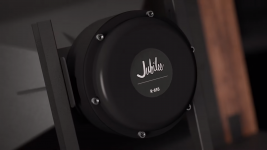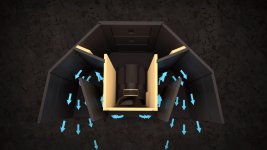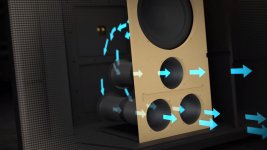apples and oranges group delay for high speed data transmission is not anything akin to the phase inversion problems of low speed, low frequencies of audio...
I think I know what Camplo is trying to say. He meant the point in time where most of the spectral energy from a transient signal arrives.
Depending on the GD curve this point may indeed exist but it is not necessarily so.
But I guess he understood that GD is causing temporal dispersion of the input signal.
Regards
Charles
Yes, that is what i was thinking he meant, too.
Hoping he meant that really, because i believe that is an intuitive leap in understanding the relationship between the time domain (impulse / energy-time-curve response) and where on the frequency & phase traces the time domain spectral energy comes from.
For the technically inclined...
http://www.hparchive.com/seminar_notes/a-127.pdf
http://hparchive.com/Bench_Briefs/HP-Bench-Briefs-1979-05-07.pdf
Thanks for those links David.
2nd Bench Brief paper was certainly more digestible than the first.
but i did see things in the first one i could wade through...and particularly liked the opening pages describing GD's two basic parts...constant and variable..
apples and oranges group delay for high speed data transmission is not anything akin to the phase inversion problems of low speed, low frequencies of audio...
The fundamental principles of group delay are the same in each case.
I have a question that is unrelated to group delay and I don't want to break the momentum there (causes the internet needs it lol) BUT I need to understand something before I can begin certain aspects of my build...
So when I take a measurement at the mouth of the horn, it is not the same measurement as 1 meter....the slope of the FR has changed and the where the HF might be down 20db at 20khz, if measured from 1 meter the FR is much closer to neutral.....WTF is that!? What part of sound physics did I miss?
I think this has something to do with the amount of direct energy?
So when I take a measurement at the mouth of the horn, it is not the same measurement as 1 meter....the slope of the FR has changed and the where the HF might be down 20db at 20khz, if measured from 1 meter the FR is much closer to neutral.....WTF is that!? What part of sound physics did I miss?
I think this has something to do with the amount of direct energy?
Last edited:
I just adjusted my REW results, to a higher resolution, and the peak energy time in the CSD are corresponding to the GD.....nuff said lol, its not 1:1 but the trend is almost identical...

Attachments
Last edited:
Well, Holger's own JBL 2234s do also have a 4" voice coil and mms of > 100 grams. So I don't understand that point of critique. While an xmech of 37 mm isn't interesting for HiFi usage it is also only of particular interest regarding robustness in PA use. No one would reasonably use them like that.
The fact that the manufacturer recommends them for studio monitoring use tells me that they are also usable for home HiFi. There is another driver the 15nlw9500 that has lower fs and higher Qts and can therefore go lower. But it wouldn't have the two-way capabilities of the 15nlw9300.
I think Unison's choice is a reasonable one.
Regards
Charles
Holger may have had tube amps in mind when he made that comment.
While most professional midwoofers and some subwoofer drivers are fine for hi-fi use, only a few work well with low-power SET amplifiers.
I've simmed the 15NLW9300 in a medium sized and big BR cab and I'm afraid it's still a heavy load for most SET amps, despite the above average η₀ and the supposed tube-friendly impedance.
Low Qts / high BL usually requires beefier amps. Unison Research own tube amps are powerhouses compared to a 2A3 SET or similar.
So when I take a measurement at the mouth of the horn, it is not the same measurement as 1 meter....the slope of the FR has changed and the where the HF might be down 20db at 20khz, if measured from 1 meter the FR is much closer to neutral.....WTF is that!? What part of sound physics did I miss?
I think this has something to do with the amount of direct energy?
With the mic directly at the mouth you're actually measuring the direct response of the driver + horn system, including the phase induced anomalies caused by internal reflections etc.
You need to measure at some distance of the horn mouth (the acoustic source) so that the response settles out.
Herein a driver + horn is clearly different from a direct radiator > the acoustic impedance matching between the diaphragm and free air.
Last edited:
https://www.dj-store.ru/data/files/files/1094_file.pdf
What do you guys think of this for a top? Vs Axi + Horn, pros n cons?
What do you guys think of this for a top? Vs Axi + Horn, pros n cons?
Last edited:
The VX 15HP polar response looks smooth from around 1kHz to near 10kHz, both horizontally and vertically, good for near and far field response on/off axis.
Without seeing the polar response of an Axi + Horn + 15", not much to compare, other than the larger Sd of the Axi's diaphragm should allow more output potential above 1.3kHz than the VX 15HP.
Without seeing the polar response of an Axi + Horn + 15", not much to compare, other than the larger Sd of the Axi's diaphragm should allow more output potential above 1.3kHz than the VX 15HP.
It would be nice to see spectral decay. Im having a hard time finding spectral decay charts for large top shelf mid woofers, anybody holding?
From Tannoy I would expect to use a Tannoy.
That's what I would expect as well.
The only Tannoy 15" Pro driver I know is the older Tannoy 3816 that was used in the V15 and which looks different from the driver in the more recent VX15 HP.
Attachments
Last edited:
Sven Pesch on Facebook, European Triode Festival posted some old school horns with tweeters in an enclosure in the horn. Sorry, can't seem to post the link myself.
Hi Keith
Send you a PM
The basket of that Tannoy looks as if it was sourced from the same manufacturer as Fane does. Or they even had the whole driver manufactured by Fane ......
Regards
Charles
Regards
Charles
It would be nice to see spectral decay. Im having a hard time finding spectral decay charts for large top shelf mid woofers, anybody holding?
Attached are a few datasheets of 15" Audax woofers including Spectral Decay and Step Response plots.
Here's a discussion on the topic and here are some measurements in a treated room.
Attachments
Last edited:
The basket of that Tannoy looks as if it was sourced from the same manufacturer as Fane does. Or they even had the whole driver manufactured by Fane ......
Regards
Charles
It's made by Fane, like many drivers of UK loudspeaker manufacturers.
Quote from Electronic Music Maker, August 1981:
"Fane Acoustics, who have been making loudspeakers for the home hi-fi and television industries since their establishment in 1958 by Dennis Newbold and Arthur Falkus. Leading hi-fi manufacturers at the time, such as Daystrom, Tannoy and B & W, used Fane's early 12 inch diameter hi-fi loudspeakers and gradually the range was increased to cover 8, 10, 13 x 8, 15 and 18 inch models as well."
Funktion One also uses Fane drivers in their smaller horn tops.
This one should correspond to the requirements of the thread title.
Attachments
Last edited:
- Home
- Loudspeakers
- Multi-Way
- Is it possible to cover the whole spectrum, high SPL, low distortion with a 2-way?
